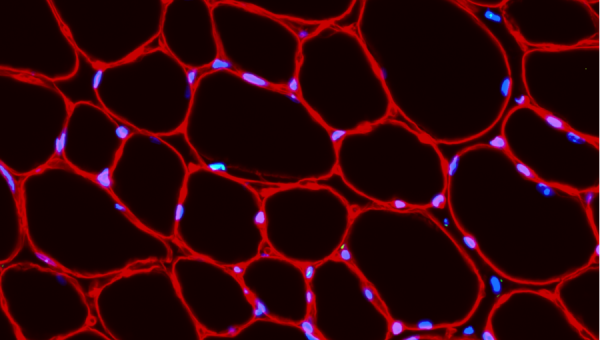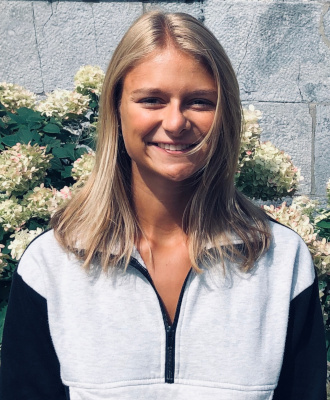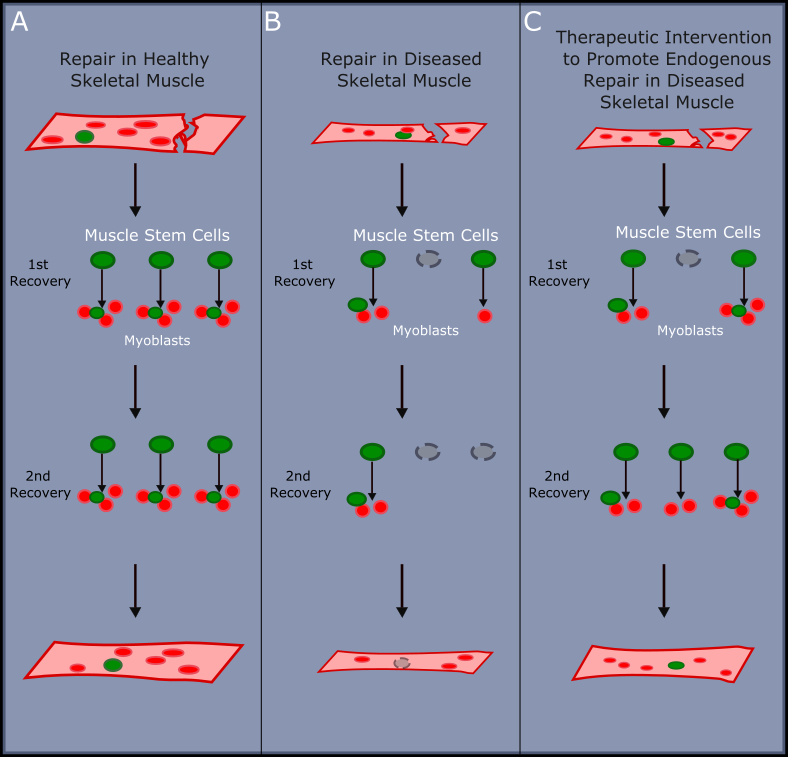
MRM Insights: Regenerative Medicine Based Strategies that Stimulate Endogenous Repair

Charlotte Sénéchal

Dr. Colin Crist
Every month, in MRM Insights, a member of the MRM Network is writing about stem cells and regenerative medicine from a different perspective. This month, Dr. Colin Crist, Associate Professor in the Department of Human Genetics at McGill University and member of the MRM Executive Committee, and Charlotte Sénéchal, Master Candidate in his lab, are discussing regenerative medicine based strategies that stimulate endogenous repair.
Regenerative Medicine Based Strategies that Stimulate Endogenous Repair: Getting to the ‘Stem’ of the Problem
Mammalian organs are composed of a great diversity of cells and tissue types. Regenerative organs, such as the skin, intestinal tract, and skeletal muscle, use resident adult stem cells both to maintain lifelong tissue function and restore tissue function after acute or during chronic injury. Adult stem cells are operationally defined by their abilities to (1) differentiate into the different cell types that make up the tissue and (2) self-renew for lifelong maintenance of the stem cell population.
Despite the ability of stem cell dependent organ regeneration, these same regenerative tissues are nevertheless subject to degenerative diseases that have very limited therapeutic options. This issue is highlighted in skeletal muscle, which in healthy individuals can undergo robust muscle stem cell (MuSC) dependent endogenous repair. Despite its capacity for regeneration, skeletal muscle is also subject to disease in the form of muscular dystrophy, muscle wasting associated with comorbidity (cachexia), and aging (sarcopenia). The paradox of a regenerative organ being susceptible to degenerative disease can be reconciled by recent studies revealing disease progression is accompanied by a decline in stem cell numbers and function, with resultant collapse of endogenous repair.
The fields of cell- and gene-based strategies to treat degenerative diseases are beginning to mature. The long-term goal is to treat irreversible organ failure with regenerative medicine strategies that will ultimately replace cells, tissues, and organs. These advances are highlighted by clinical trials that have investigated the treatment of macular degeneration with autologous retinal epithelial sheets derived from human induced pluripotent stem (iPSC) cells. More recently, transplantation of autologous transgenic keratinocyte cultures gave rise to virtually an entire epidermis, populated with transgenic epidermal stem cells, in a young patient with a devastating skin blistering disease. Although the number of patients that have been treated with these new stem cell-based therapies is very low, interest in cell-based therapies continues to be buoyed by the success of cancer therapies such as chimeric antigen receptor (CAR) T-cell based immunotherapies and hematopoietic stem cell transplants.
However, in some cases of damage or disease, such as in skeletal muscle, a more effective strategy might be to stimulate endogenous repair by maintaining, invigorating or rejuvenating adult stem cells in situ. This strategy would be less invasive, more cost-effective and potentially more feasible to tissues that are refractory to transplantation. We envision that promoting stem cell dependent endogenous repair will go hand-in-hand with current therapeutic, nutritional or exercise-based interventions that seek to maintain muscle mass and strength.

Promoting MuSC-dependent Endogenous Repair in Skeletal Muscle. (A) Skeletal muscle regeneration and life-long maintenance of skeletal muscle depend on the activation of muscle stem cells that respond to skeletal muscle injury. MuSCs strike a balance between self-renewal, expansion and differentiation to myofibres to regenerate muscle efficiently. (B) Muscle weakness associated with disease is coincident with a decrease in MuSC numbers and/or function. (C) New therapeutic interventions to promote endogenous repair aim to restore the balance of MuSCs committed to self-renewal, expansion and differentiation.
Looking to the future, efforts to promote endogenous repair will benefit from studies that increase our understanding of stem cell function during regeneration in vivo. These studies will in turn benefit from single cell gene expression profiling of healthy, regenerating and diseased tissues that will enhance our knowledge of different cell states and help to identify pharmacologically targetable pathways. Genetic studies that seek to understand how cell states are maintained should lead to the identification of new pharmacological targets.
Ongoing research in Dr. Colin Crist’s laboratory at the Lady Davis Institute for Medical Research seek to understand the molecular underpinnings of MuSC self renewal. By identifying pharmacologically targetable pathways, we aim to expand and genetically modify MuSCs ex vivo for novel cell-based therapies and to invigorate adult MuSC populations in vivo to promote endogenous repair.
About the authors:
Dr. Colin Crist, PhD is a Principal Investigator at the Lady Davis Institute for Medical Research and Associate Professor in the Department of Human Genetics at McGill University. He is interested in how stem cell populations in the body are specified during development and then maintained throughout life.
Ms. Charlotte Sénéchal is a graduate student in the Department of Human Genetics at McGill University. Her research project in the Crist Laboratory aims to determine how G protein coupled receptors (GPCRs), which are the pharmacological target of an estimated one third of all known drugs, regulate the activity of MuSCs.
Illustration:
Title: Regeneration of skeletal muscle myofibres (red) is dependent on a rare population of resident adult muscle stem cells (green).
Photo Credit: Charlotte Sénéchal
Legend: Immunofluorescence of mouse tibialis anterior with antibodies against PAX7 (green) and LAMININ (red). Myonuclei are counterstained with DAPI (blue).
